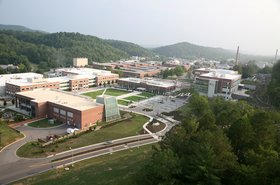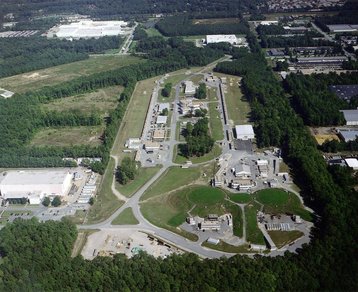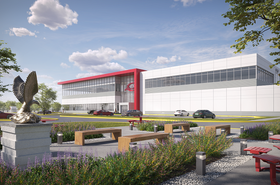The US Department of Energy (DOE) has selected Thomas Jefferson National Accelerator Facility in Virginia as the lead for its High Performance Data Facility Hub (HPDF).
The HPDF, part of the DOE's Advanced Scientific Computing Research (ASCR) program, will be a $300-500 million resource for data analysis, networking and storage.
Calls for proposals for the HPDF were made between March and May of this year after the project was approved in August 2020. Jefferson Lab will lead the effort, in partnership with the DOE's Lawrence Berkeley National Laboratory. The HPDF will enable researchers to access data from a variety of sources and scientific facilities and will be housed in the Jefferson Lab Data Center Building with a mirrored version at the Berkeley Lab site.
The Jefferson Lab Data Center Building is a new development being funded by the Commonwealth of Virginia which has already provided $6 million in seed funding. A further $43m will be provided for the construction of the modular data center on Jefferson's central campus.
The data center will initially span 65,000 sq ft (6,038 sqm) but can be expanded to 110,000 sq ft (10,220 sqm). Initial budget estimates expect the HPDF to have an operational budget of $75m annually, beginning in 2028.
The HPDF will create around 150 jobs including 50 for computer scientists and engineers.
“We are honored to be selected by the DOE’s Advanced Scientific Computing Research program to lead this project,” said Jefferson Lab director Stuart Henderson. “Building on our extensive experience with large data sets and high-performance computing (HPC), and our new and ongoing partnerships exploring state-of-the-art approaches to data and data science, we will build a new facility that will revolutionize the way we make scientific discoveries.”
The HPDF at Jefferson Lab will be managed by Amber Boehnlein, the lab's associate director for Computational Science and Technology. “Jefferson Lab has assembled an amazing team to launch this project,” Boehnlein said. “Building on our broad experience in leading large, complex projects and research programs for the Office of Science, we look forward to delivering and operating a data facility that will power discoveries across a wide range of scientific disciplines and create a trove of valuable data for researchers, today and in the future.”
The Advanced Scientific Computing Research program includes three HPC facilities: the National Energy Research Scientific Computing Center (NERSC) at Lawrence Berkeley National Laboratory (LBNL) and two Leadership Computing Facilities at Oak Ridge National Laboratory and Argonne National Laboratory.
The LBNL is already home to the Perlmutter supercomputer which currently ranks eighth on the Top500 list with a theoretical peak performance of 93.75 petaflops. In April 2023, it was revealed that LBNL was exploring a new exascale supercomputer to be delivered in 2026.
Argonne National Laboratory is home to the two exaflops supercomputer Aurora, while Oak Ridge National Laboratory houses Frontier, the one exaflops supercomputer currently at number one on the Top500 list.
More in HPC & Quantum
-

-

-

Episode The future of AI and HPC




